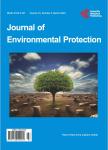Phytoaccumulation of Arsenic, Cadmium and Lead by Brassica juncea Parents and Their F1 Hybrids
Phytoaccumulation of Arsenic, Cadmium and Lead by Brassica juncea Parents and Their F1 Hybrids作者机构:Environment Division School of Civil Engineering and the Environment University of Southampton Southampton UK
出 版 物:《Journal of Environmental Protection》 (环境保护(英文))
年 卷 期:2016年第7卷第5期
页 面:613-622页
学科分类:070902[理学-地球化学] 0709[理学-地质学] 07[理学]
主 题:Bioremediation Phytoaccumulation Heavy Metal Arsenic Cadmium Lead B. juncea (cvs. Rai and BARI-11)
摘 要:Although Brassica juncea (Indian mustard) is reported to be a good accumulator of metals, little is known of the selected varieties of B. juncea (cvs. Rai and BARI-11). This paper investigates the phytoaccumulation of arsenic, cadmium and lead by B. juncea (cvs. Rai and BARI-11) parents and F1 hybrids. The experiment was conducted in the hydroponic media in the greenhouse of University of Southampton under a Randomised Block Design. Sodium arsenite, cadmium sulphate and lead nitrate with 0 ppm, 0.5 ppm and 1 ppm were used. The cadmium treated plants were analysed by Varian Atomic absorption spectrophotometer-200. The samples of arsenic and lead were analysed by Inductively Coupled Plasma Atomic Emission Spectrophotometer. The results suggest that arsenic was detected only in the root systems while cadmium and lead were detected both in the root and shoot systems. Significant differences in the uptake were observed for different concentrations. Accumulation of arsenic was detected only in the root systems of B. juncea (cvs. Rai and BARI-11) at lower concentrations. Hence, this can be used as an agriculturally viable and efficient phytoaccumulator in the arsenic affected areas where contamination level is low and the contamination occurs at the rooting level.



